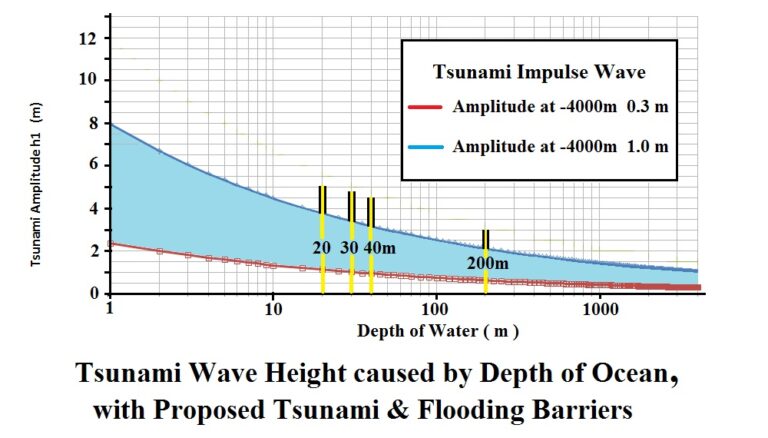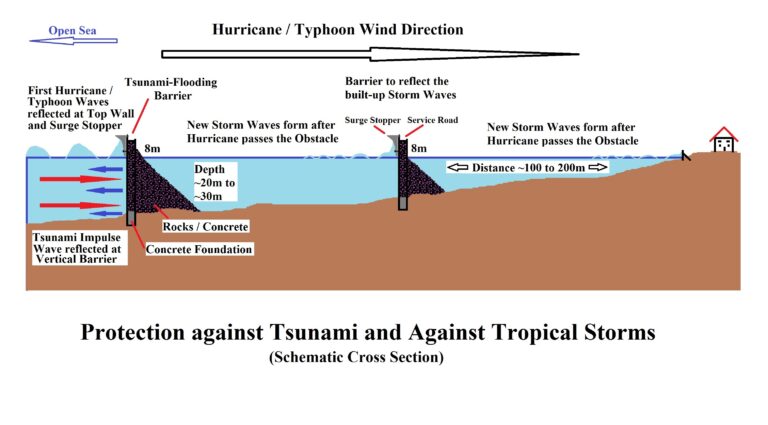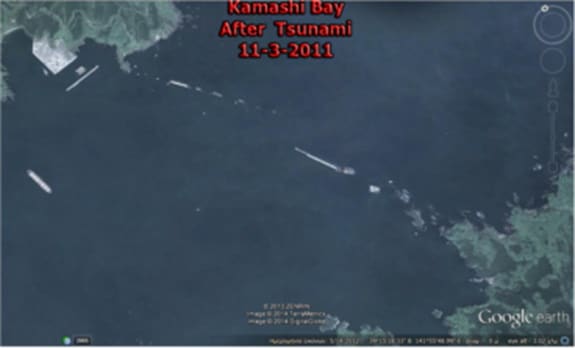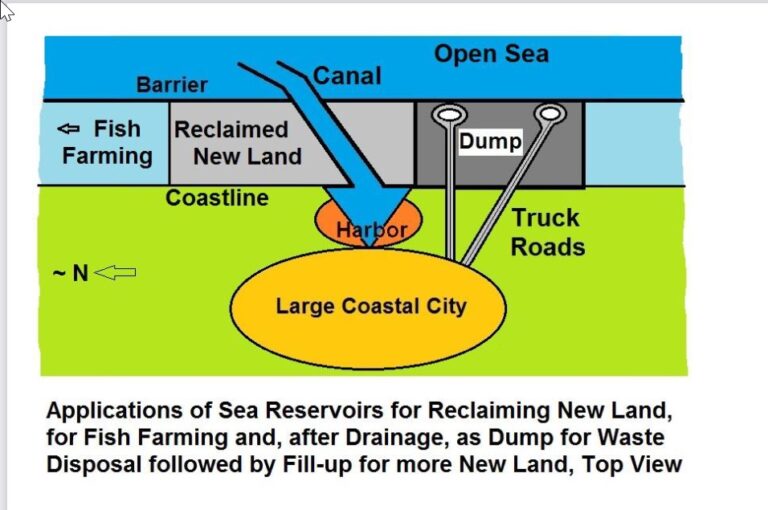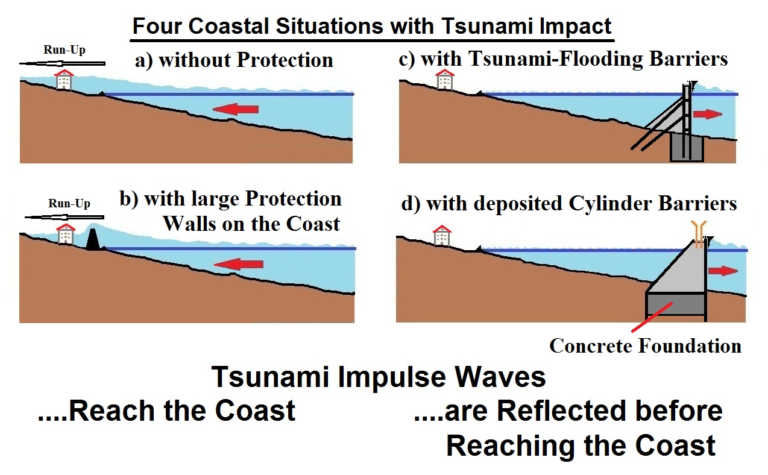Stop Flooding from Tsunami, Typhoon and Hurrican
Two earthquakes of magnitude 9.1 caused on December 26, 2004 the Indian Ocean tsunami with 228 thousand fatalities and on March 11, 2011 the Tohoku tsunami with 20’000 fatalities followed by the Fukushima nuclear accident. These catastrophes triggered the study of tsunami books and literature and the invention of submerged vertical barriers.
So far, the classical breakwaters had been built with a sloped heavy foundation and a very heavy caisson on top. However, numerous breakwaters failed. A prominent failure occurred 2011 of the Kamaishi breakwater, built in 31 years at cost of 31 billion USD, six months after it had been celebrated as largest breakwater of the world for the Guinness Book of World Records.
The new vertical walls built in the sea will reflect the tsunami pressure waves, travelling at high speeds of about 750 km per hour, and thus prevent the transformation of their impulse energy to potential energy when approaching the coast and reduced water depth. Thus the rising sea level and resulting waterfronts up to more than 10m height will be suppressed.
Building of such deep walls of typically 20m depth by conventional submarine technology is difficult. The principle and the erection of submarine walls by relatively simple efficient technologies start with lowering high-strength steel fences with horizontal anchors, or two parallel steel fences with distance holders, into the sea and fixing the fences with rocks or rubble deposited from top. Barriers parallel to the coastline are preferably built as empty cylinder with attached concrete foundation – of 20m to more than 100m length- on land/ in the harbour, transported by floatation to the intended site (in advance prepared by dredging), and then filled with rocks, liquid concrete, grout, sand. These barriers extend above sea level and have concrete walls on top to protect a concrete service and touristic road. The top concrete walls are protected against storm surges by replaceable surge stoppers.
Worldwide, many coastlines, beaches and coastal cities should be protected against flooding from tsunami and tropical storms, especially in view of rising sea level and increasing storm intensity due to climate change. In view of the high construction costs the threatened countries will need the assistance from the World Bank. These barriers protect threatened cities and coastlines also against oil spill and other contamination from the ocean and thus protect flora, fauna and beaches.


